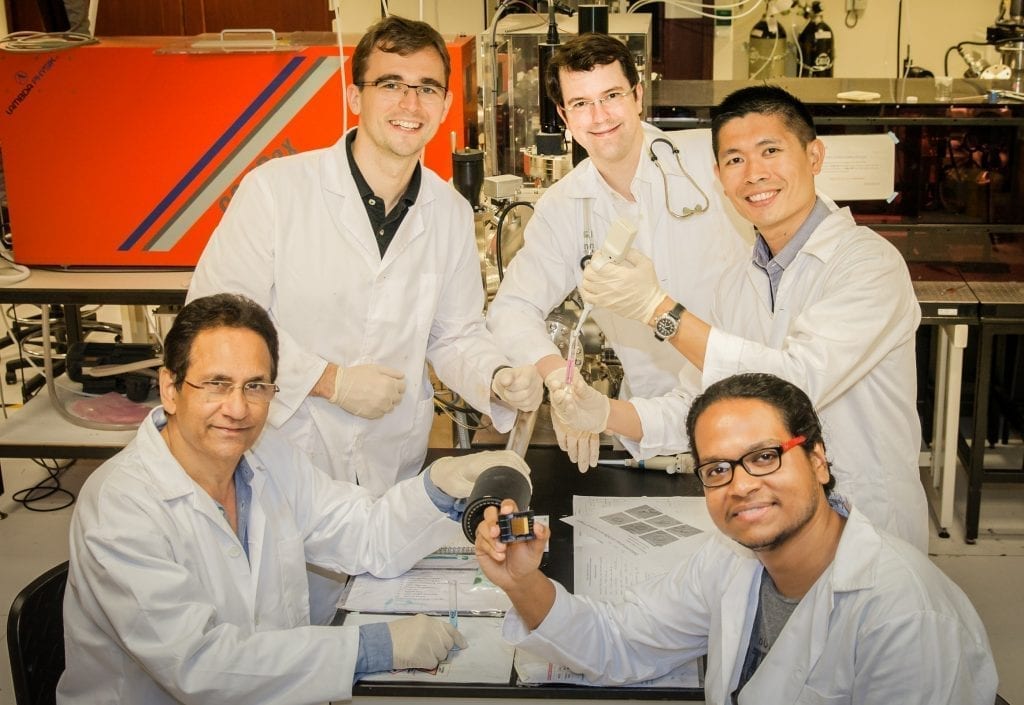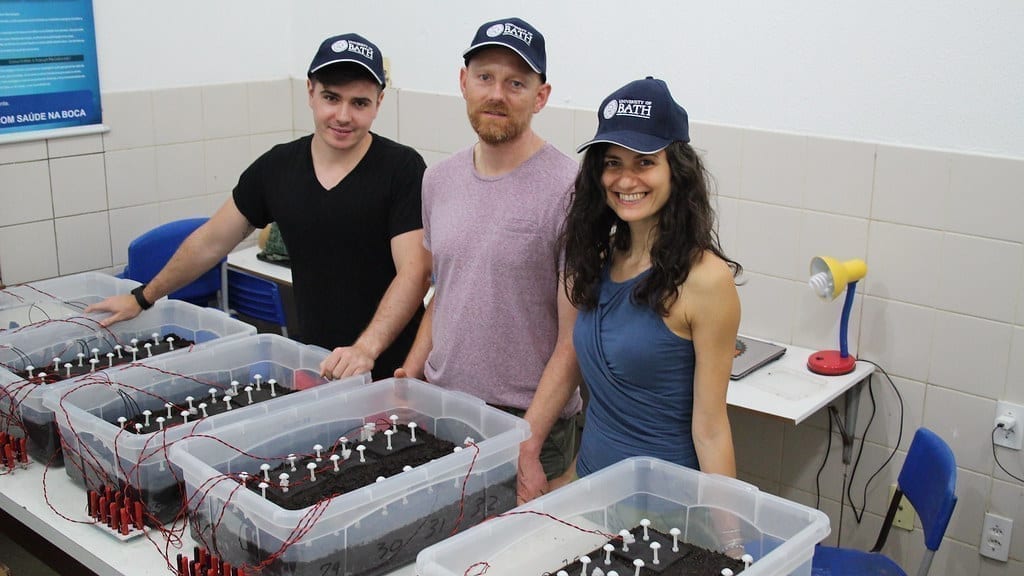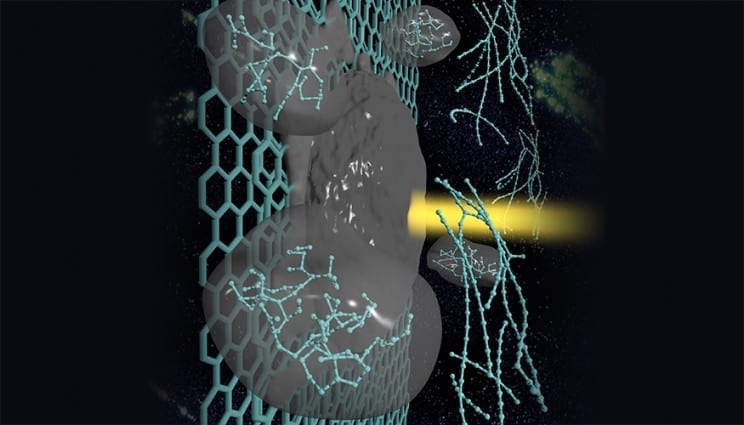
Researchers at the National University of Singapore (NUS) have developed a technique to observe, in real time, how individual blood components interact and modify advanced nanoparticle therapeutics.
The method, developed by an interdisciplinary team consisting clinician-scientist Assistant Professor Chester Lee Drum of the Department of Medicine at the NUS Yong Loo Lin School of Medicine, Professor T. Venky Venkatesan, Director of NUS Nanoscience and Nanotechnology Institute, and Assistant Professor James Kah of the Department of Biomedical Engineering at the NUS Faculty of Engineering, helps guide the design of future nanoparticles to interact in concert with human blood components, thus avoiding unwanted side effects.
This research was published online in the journal Small, a top multidisciplinary journal covering research at the nano- and microscale, on 10 September 2015.
Challenges of using nanoparticles in diagnostic and drug delivery systems
With their small size and multiple functionalities, nanoparticles have attracted intense attention as both diagnostic and drug delivery systems. However, within minutes of being delivered into the bloodstream, nanoparticles are covered with a shell of serum proteins, also known as a protein ‘corona’.
“The binding of serum proteins can profoundly change the behaviour of nanoparticles, at times leading to rapid clearance by the body and a diminished clinical outcome,” said Asst Prof Kah.
Existing methods such as mass spectroscopy and diffusional radius estimation, although useful for studying important nanoparticle parameters, are unable to provide detailed, real-time binding kinetics.
Novel method to understand nano-bio interactions
The NUS team, together with external collaborator Professor Bo Liedberg from the Nanyang Technological University, showed highly reproducible kinetics for the binding between gold nanoparticles and the four most common serum proteins: human serum albumin, fibrinogen, apolipoprotein A-1, and polyclonal IgG.
“What was remarkable about this project was the initiative taken by Abhijeet Patra, my graduate student from NUS Graduate School for Integrative Sciences and Engineering, in conceptualising the problem, and bringing together the various teams in NUS and beyond to make this a successful programme,” said Prof Venkatesan. “The key development is the use of a new technique using surface plasmon resonance (SPR) technology to measure the protein corona formed when common proteins in the bloodstream bind to nanoparticles,” he added.
The researchers first immobilised the gold nanoparticles to the surface of a SPR sensor chip with a linker molecule. The chip was specially modified with an alginate polymer layer which both provided a negative charge and active sites for ligand immobilisation, and prevented non-specific binding. Using a 6 x 6 microfluidic channel array, they studied up to 36 nanoparticle-protein interactions in a single experiment, running test samples alongside experimental controls.
“Reproducibility and reliability have been a bottleneck in the studies of protein coronas,” said Mr Abhijeet Patra. “The quality and reliability of the data depends most importantly upon the design of good control experiments. Our multiplexed SPR setup was therefore key to ensuring the reliability of our data.”
Testing different concentrations of each of the four proteins, the team found that apolipoprotein A-1 had the highest binding affinity for the gold nanoparticle surface, with an association constant almost 100 times that of the lowest affinity protein, polyclonal IgG.
“Our results show that the rate of association, rather than dissociation, is the main determinant of binding with the tested blood components,” said Asst Prof Drum.
The multiplex SPR system was also used to study the effect of modification with polyethylene (PEG), a synthetic polymer commonly used in nanoparticle formulations to prevent protein accumulation. The researchers found that shorter PEG chains (2-10 kilodaltons) are about three to four times more effective than longer PEG chains (20-30 kilodaltons) at preventing corona formation.
“The modular nature of our protocol allows us to study any nanoparticle which can be chemically tethered to the sensing surface,” explained Asst Prof Drum. “Using our technique, we can quickly evaluate a series of nanoparticle-based drug formulations before conducting in vivo studies, thereby resulting in savings in time and money and a reduction of in vivo testing,” he added.
Read more: Observing nano-bio interactions in real time
The Latest on: Nano-bio interactions
[google_news title=”” keyword=”nano-bio interactions” num_posts=”10″ blurb_length=”0″ show_thumb=”left”]
via Google News
The Latest on: Nano-bio interactions
- Scientists explore nature’s promise in combating plastic wasteon May 8, 2024 at 6:36 am
By Claire Asher Plastic is a remarkably versatile and durable material, which has made it indispensable in almost every area of modern life. But these same properties, amplified by our ...
- Digi, Nano, Bio, Neuro – or why we should care more about converging technologieson May 7, 2024 at 2:07 pm
Dirk Helbing expects that in the future digital technologies may penetrate the human body ever more. However, he believes that society is not prepared for the risks. To protect our most intimate data ...
- Nanotechnology in Therapeuticson May 6, 2024 at 4:59 pm
Nanomedicine. 2012;7(8):1253-1271. Although passive targeting approaches form the basis of clinical therapy, they suffer from several limitations. Ubiquitously targeting cells within a tumor is ...
- 'Quartet Nanocage' vaccine found effective against coronaviruses that haven't even emerged yeton May 6, 2024 at 6:38 am
Researchers have developed a new vaccine technology that has been shown in mice to provide protection against a broad range of coronaviruses with potential for future disease outbreaks—including ones ...
- Nanoparticles and the Blood Coagulation Systemon May 5, 2024 at 5:00 pm
Part I is focused on desirable interactions between nanoparticles and the coagulation system, and discusses benefits of using nanotechnology to intervene in coagulation disorders. Undesirable ...
- New president takes helm of IHL Board of Trusteeson April 23, 2024 at 12:37 pm
At the conclusion of Thursday’s IHL meeting, Dr. Alfred McNair handed the gavel to incoming president Bruce Martin. McNair’s term on the Board will end on May 7th.
- Iran introduces first bio-nanotechnology fertility aid producton April 9, 2024 at 9:10 am
TEHRAN, 9 April (BelTA - IRNA) - The iron nanocomposite is an environment friendly product which has already had significant effects on improving the results of In Vitro Maturation (IVM) and In ...
- Lignin-based Micro- and Nano-entities: Functionalities and Applicationson April 3, 2024 at 1:41 am
The ongoing research advancements pursue the search for biobased and sustainable alternatives to traditional products, with a focus on circularity, including industrial by-products as raw materials.
- Bio & Medicine newson March 27, 2024 at 5:01 pm
National Science Review recently published research on the synthesis of quantum dots (QDs) in the nucleus of live cells by Dr. Hu Yusi, Associate Professor Wang Zhi-Gang, and Professor Pang Dai ...
- MSc Nanomedicine by Researchon March 2, 2022 at 7:00 am
Demonstrate understanding of the use of nanomaterials in medicine, with emphasis on nano-bio interactions, principles of nanosafety and nanotoxicology, the use of nanotechnology to improve detection ...
via Bing News











